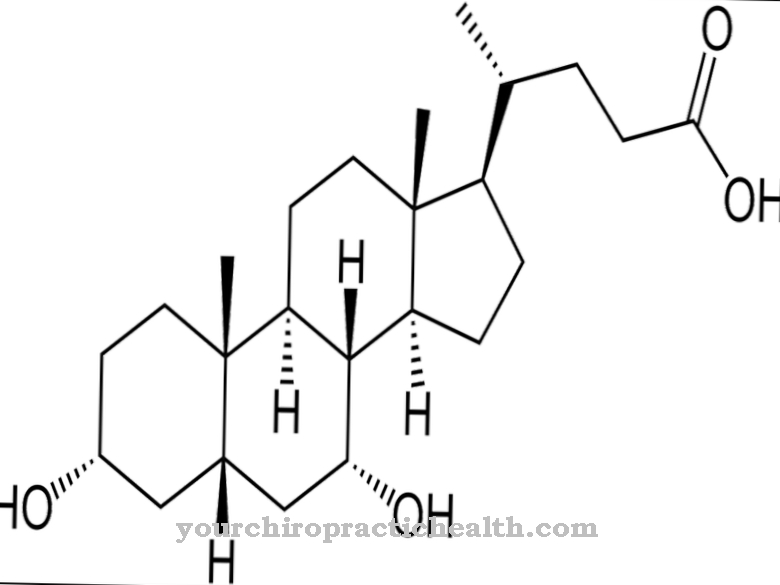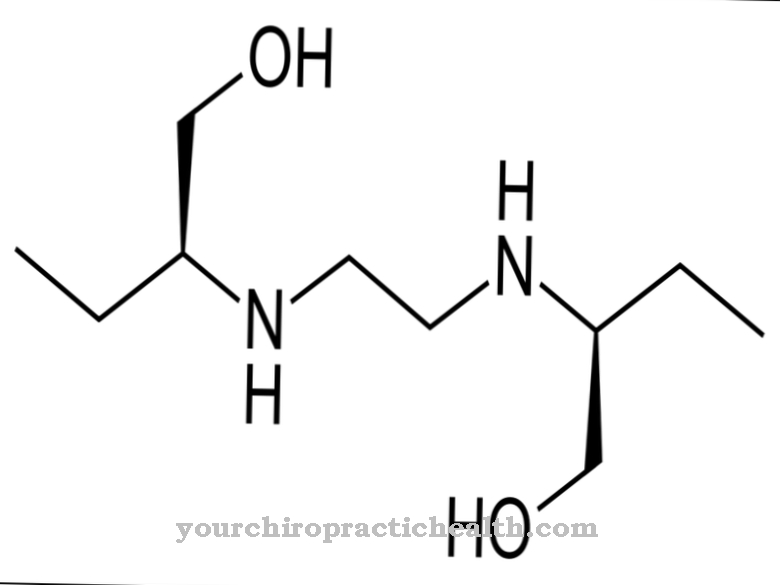At Meptazinol it is a drug that belongs to the group of active substances called opioid analgesics. The drug is used in the therapy of various pain conditions. Unlike most of the other types of these active ingredients, when administered by injection, meptazinol is not subject to the Narcotics Act. Meptazinol is particularly commonly used to treat labor pain.
What is Meptazinol?

The active ingredient Meptazinol is available on the market under the trade name Meptid®. The manufacturer of the product is the company Riemser Arzneimittel. Meptazinol is an opioid analgesic that is suitable for moderate to severe pain. The pain treated can have different causes. Together with the active ingredients nalbuphine and tramadol, meptazinol is the only opioid analgesic that can be injected and is not subject to the Narcotics Act. The so-called analgesic potency of the substance meptazinol is 0.1 times that of morphine. For this reason there is almost no development of dependency.
Meptazinol hydrochloride is used in most cases in pharmacy. There are different chemical names for this substance. In principle, the active ingredient is an aromatic hydrocarbon compound. At room temperature, meptazinol appears in the form of a solid. The melting point of the active ingredient is 128 to 132 degrees Celsius. If meptazinol is present as the hydrochloride, the melting point rises to around 183 to 187 degrees Celsius.
In addition, there are two different stereoisomers of the active ingredient meptazinol, because the corresponding molecule has a so-called stereocenter. It is divided into the R-enantiomer and the mirror-identical S-enantiomer. In those preparations that are commercially available, a so-called 1: 1 racemate is usually present in the meptazinol.
Pharmacological effect
The µ1 opioid receptor plays a decisive role in the analgesic effect. The meptazinol binds to this receptor as a partial agonist. There is only a slight binding to the µ2 receptor, which can trigger respiratory depression. For this reason, the risk of respiratory depression with therapy with meptazinol is only slight. Unlike other frequently used analgesics, central cholinergic mechanisms support the analgesic effect of meptazinol.
Numerous processes play a role in the synthesis of the active ingredient meptazinol. The starting materials for the production of Meptazinol are 2- (3-methoxyphenyl) butyronitrile and ethyl 4-iodobutyrate. The two substances are converted into other compounds as part of chemical processes and split several times. As a result of the last reaction of the substances, the active ingredient meptazinol is formed.
Medical application & use
The active ingredient meptazinol is primarily used to treat pain. The drug is used particularly frequently during childbirth. The aim of the administration is to make the labor pain more bearable.
In contrast to other drugs, the drug Meptazinol is characterized by a better side effect profile and is increasingly replacing the active ingredient pethidine in the delivery rooms. The main advantage of meptazinol is that the substance leads to less frequent respiratory depression in newborn babies. If respiratory depression does occur, it is usually less pronounced.
In addition to the treatment of labor pains, the active ingredient Meptazinol is also characterized by a variety of other areas of application. For example, it is used as a postoperative analgesic if the pain is only mild to moderate. The drug is also used as a basic analgesic in opioid-assisted anesthesia.
In addition, Meptazinol is also used to some extent for acute and traumatic pain, for example in emergency medicine. The reason for this is that the likelihood of onset of respiratory depression is greatly reduced. In addition, the active ingredient meptazinol is used as an analgesic for pain therapy in older patients.
Meptazinol is also given in painful situations associated with severe blood loss. The adrenergic and slightly circulatory stimulating effect is used. In addition, you benefit from the anti-arrhythmic effect of the fabric. Since the impairment of vigilance (alertness) is low and only minimal proteins bind, it is preferably used as an analgesic for moderate pain, especially in very old patients.
Basically, the doctor decides on the duration of the use of the active ingredient. It is usually based on the cause of the pain and the type of illness. Meptazinol in liquid form is either injected into the muscle or slowly into a vein.
You can find your medication here
➔ Medicines for painRisks & side effects
Therapy with the active ingredient meptazinol can lead to a number of undesirable side effects. The most common side effects include vomiting and nausea. Fatigue also often occurs as part of the treatment. This can lead to drowsiness and dizziness. In addition, cephalgia (headache) and gastrointestinal changes are possible. The affected patients often complain of abdominal pain and diarrhea.
If the drug Meptazinol is administered, various interactions with other substances must be observed. For example, drugs with a liver enzyme-inducing effect are able to significantly minimize the effect of meptazinol.
In some cases, therapy with meptazinol is not suitable. This is especially true during pregnancy, as there is a risk of respiratory depression in the child. The birth process is an exception.



























